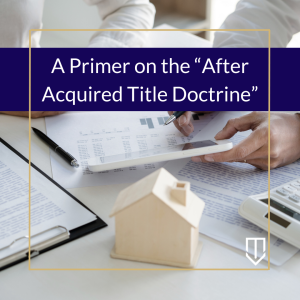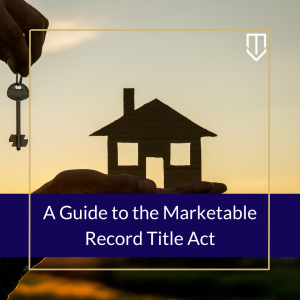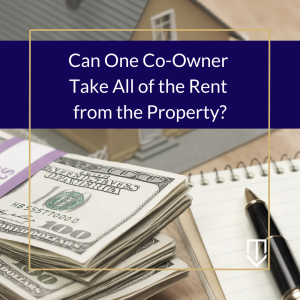 The purpose of this article is to explain the ownership presumption in a probate dispute. This is because property ownership can cause disputes even after death, which must be resolved in the probate or civil courts. (Schlyen v. Schlyen (1954) 43 Cal.2d 361, 370–371.) Specifically, the understanding of how marriage affects ownership presumptions in probate matters was changed in the 2021 case Estate of Wall (Wall). ((2021) 68 Cal.App.5th 168.) This case affects how trial and probate courts will consider ownership disputes. Because this specific case dealt with a probate action, it concerns the property and assets of a decedent. In Wall the court held that the title presumption prevails over the community property presumption.
The purpose of this article is to explain the ownership presumption in a probate dispute. This is because property ownership can cause disputes even after death, which must be resolved in the probate or civil courts. (Schlyen v. Schlyen (1954) 43 Cal.2d 361, 370–371.) Specifically, the understanding of how marriage affects ownership presumptions in probate matters was changed in the 2021 case Estate of Wall (Wall). ((2021) 68 Cal.App.5th 168.) This case affects how trial and probate courts will consider ownership disputes. Because this specific case dealt with a probate action, it concerns the property and assets of a decedent. In Wall the court held that the title presumption prevails over the community property presumption.
What is an Ownership Presumption?
Marriage and death can both affect the presumption of who owns a disputed piece of property. There are two main presumptions which affect these disputes. First, the title presumption is that the property title being in a person’s name means that person will prevail in an ownership dispute. (Pearce v. Briggs (2021) 68 Cal.App.5th 466, 483.) The title presumption is derived from the evidence code. (Evid. Code, § 662 .) Second, the community property presumption is that the property being purchased with community funds of a married couple means the property belongs to the community (both parties) in a property dispute. (In re Brace (2020) 9 Cal.5th 903, 938.) The community property presumption is based on the family law code. (Fam. Code, § 760.) If a court rules the title presumption will prevail that means the person with their name on the title will prevail even if the property was bought during their marriage with community funds.
 California Partition Law Blog
California Partition Law Blog


 The purpose of this article is to explore the finer distinctions between deeds and contracts. In California law,
The purpose of this article is to explore the finer distinctions between deeds and contracts. In California law,  The purpose of this article is to explain what a Qualified Personal Residence Trust (QPRT) is. A QPRT is an irrevocable trust which allows the creator, the grantor, to move a home out of their personal estate. This is done to give the home to a future beneficiary with gift tax savings. This is important because a QPRT lets the homeowner stay in the house with a “retained interest” until the specified date. After that date, the remaining interest and ownership of the house transfers to the beneficiary.
The purpose of this article is to explain what a Qualified Personal Residence Trust (QPRT) is. A QPRT is an irrevocable trust which allows the creator, the grantor, to move a home out of their personal estate. This is done to give the home to a future beneficiary with gift tax savings. This is important because a QPRT lets the homeowner stay in the house with a “retained interest” until the specified date. After that date, the remaining interest and ownership of the house transfers to the beneficiary. The purpose of this article is to explain what a Transfer on Death (TOD)
The purpose of this article is to explain what a Transfer on Death (TOD)  The purpose of this article is to explain what a bona fide purchaser for value is and how that status impacts someone’s property rights. A bona fide purchaser for value (or bona fide purchaser) is someone who acquires a property interest or encumbrance like a property, mortgage, or lease, and meets two specific criteria.
The purpose of this article is to explain what a bona fide purchaser for value is and how that status impacts someone’s property rights. A bona fide purchaser for value (or bona fide purchaser) is someone who acquires a property interest or encumbrance like a property, mortgage, or lease, and meets two specific criteria. The purpose of this article is to discuss the commonly-discussed, but poorly understood, concepts of a “cloud on title.” A “Cloud on title” is an adverse claim, which may look good on its face, but is actually invalid or barred in some way.
The purpose of this article is to discuss the commonly-discussed, but poorly understood, concepts of a “cloud on title.” A “Cloud on title” is an adverse claim, which may look good on its face, but is actually invalid or barred in some way.  Probate proceedings can often be complex, especially when it comes to the sale of property within an estate. In California, the rules governing commissions for agents, brokers, and auctioneers involved in probate sales are outlined in California Probate Code.
Probate proceedings can often be complex, especially when it comes to the sale of property within an estate. In California, the rules governing commissions for agents, brokers, and auctioneers involved in probate sales are outlined in California Probate Code. When it comes to real estate transactions, ensuring a clean and clear title is essential. However, what happens if a property is sold without a perfect title, only for the seller to acquire the missing rights or interests later? This scenario is where the After Acquired Title Doctrine comes into play. In this blog, we’ll discuss what this doctrine entails, its implications for buyers and sellers, and how it impacts real estate transactions.
When it comes to real estate transactions, ensuring a clean and clear title is essential. However, what happens if a property is sold without a perfect title, only for the seller to acquire the missing rights or interests later? This scenario is where the After Acquired Title Doctrine comes into play. In this blog, we’ll discuss what this doctrine entails, its implications for buyers and sellers, and how it impacts real estate transactions. The Marketable Record Title act provides a statutory time limit to eliminate certain liens. Specifically, the purpose is to enhance the marketability of property by fixing an expiration date for certain interests, which are generally ancient mortgages, deeds of trust, unexercised options, powers of termination, unperformed contracts for the sale of real property, dormant mineral intersts, and abandoned easements, while also providing a procedure for allowing the interests to be preserved. In other words, the Act helps to simplify and facilitate real property transactions. In this blog, we’ll delve into what the Marketable Record Title Act entails, its significance, and how it impacts property owners.
The Marketable Record Title act provides a statutory time limit to eliminate certain liens. Specifically, the purpose is to enhance the marketability of property by fixing an expiration date for certain interests, which are generally ancient mortgages, deeds of trust, unexercised options, powers of termination, unperformed contracts for the sale of real property, dormant mineral intersts, and abandoned easements, while also providing a procedure for allowing the interests to be preserved. In other words, the Act helps to simplify and facilitate real property transactions. In this blog, we’ll delve into what the Marketable Record Title Act entails, its significance, and how it impacts property owners. Often, the question of distributing rent earned on a co-owned property arises in the context of cotenants. Cotenants have equal rights to possess their property with their fellow cotenants. This means that no one cotenant can exclude another from the property. One cotenant can, however, assign their
Often, the question of distributing rent earned on a co-owned property arises in the context of cotenants. Cotenants have equal rights to possess their property with their fellow cotenants. This means that no one cotenant can exclude another from the property. One cotenant can, however, assign their